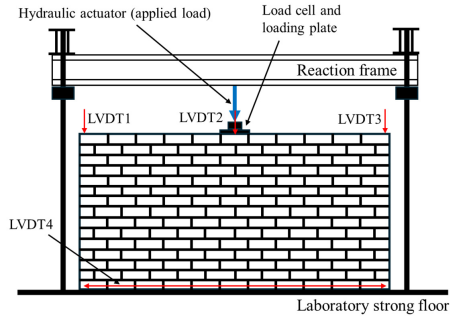Mark Masia, Lewis Gooch, Goran Simundic, Milon Howlader, and Adrian Page
i Professor and Director, CIPAR, School of Engineering, The University of Newcastle, Callaghan NSW 2308, Australia, mark.masia@newcastle.edu.au
ii Research Associate, CIPAR, School of Engineering, The University of Newcastle, Callaghan NSW 2308, Australia, lewis.gooch@newcastle.edu.au
iii Structural and Mechanical Testing Officer, ENERTREN, Newcastle NSW, Australia, goran5.simundic@gmail.com
iv Research Associate, CIPAR, School of Engineering, The University of Newcastle, Callaghan NSW 2308, Australia, milon.howlader@newcastle.edu.au
v Emeritus Professor, CIPAR, School of Engineering, The University of Newcastle, Callaghan NSW 2308, Australia, adrian.page@newcastle.edu.au
ABSTRACT
Stack bonded (or stack pattern) masonry is a form of construction in which the masonry units in successive courses are aligned vertically above one another. This bonding pattern leads to continuous vertical joints resulting in a weak form of construction, which is vulnerable to cracking along the continuous vertical joints. Despite its inferior structural performance compared to more traditional bonding patterns, it has a history of being used in architectural feature applications. Furthermore, its popularity has increased again in recent years as architects push the boundaries of what is possible in masonry facades. In response, new code provisions which require the use of bed joint reinforcement were introduced to AS3700 – Masonry Structures in 2018 [1] to help inform the structural design of stack bonded masonry subjected to out-of-plane bending. However, its performance under concentrated compression loading is yet to be studied. The current paper presents an experimental study designed to investigate the relative performance of stack bonded masonry, with and without bed joint reinforcement, compared to traditional running (stretcher) bonded masonry, when subjected to concentrated compression loads. For running bonded masonry, AS3700 [1] allows strength enhancement immediately beneath a concentrated load due to the confinement provided by the surrounding masonry and assumes concentrated loads will disperse through the masonry at 45° to the horizontal. However, due to the presence of the continuous vertical joints in stack bonded masonry, it remains unclear whether these assumptions still apply. The current study investigates these aspects with a view to assessing the suitability of the current code provisions for applications involving stack bonded masonry. While it was found that unreinforced stack bonded masonry has limited ability to disperse concentrated loads, the use of the AS3700 [1] prescribed quantities and distribution of bed joint reinforcement is effective in achieving a performance similar to that of unreinforced running bonded masonry.
KEYWORDS: concentrated compression load, masonry, stack bond, stack pattern.
049-Masia.pdf



